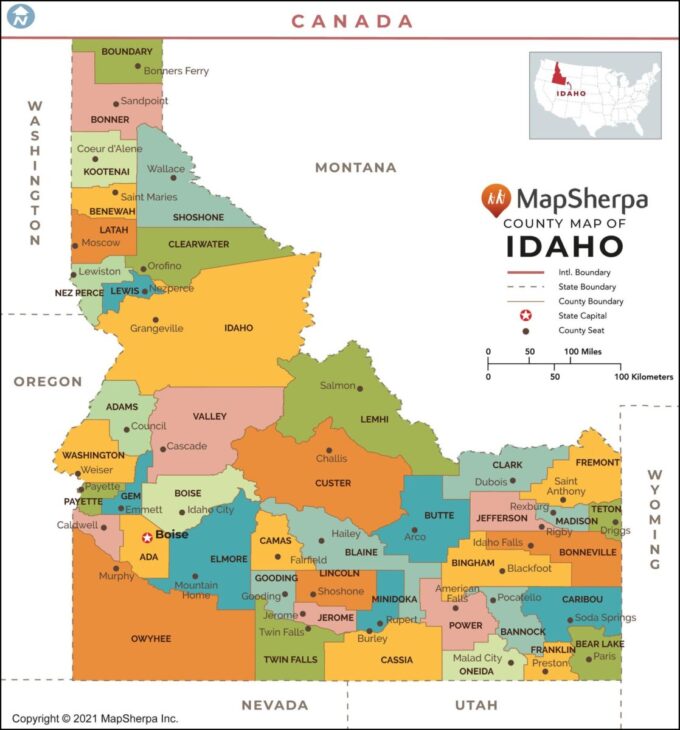Navigating Idaho’s Building Jurisdictions and Their Impact on Construction and Affordable Housing
Idaho’s building regulations present unique challenges due to the state’s blend of home rule flexibility and county-level Dillon’s Rule restrictions. With 44 counties and over 200 incorporated cities and towns, Idaho’s local governments have varying levels of authority, affecting everything from zoning to building codes. For developers and builders, navigating Idaho’s numerous building jurisdictions means dealing with a patchwork of codes and standards that complicate development, especially for offsite and modular construction seeking to address the affordable housing crisis. Navigating Idaho’s Building Jurisdictions is critical to success for Architects, Engineers, Developers and Contractors who work across the state.

Understanding Idaho’s Building Jurisdictions
Idaho comprises 44 counties, of which many contain unincorporated areas that fall under county jurisdiction rather than city or town governments. There are also more than 200 incorporated towns and cities, each with its own set of rules and regulations. This diversity impacts everything from construction standards to land use and zoning regulations.
In Idaho, local governance generally follows a home rule approach, giving cities and towns some autonomy to establish building codes, land use regulations, and zoning. However, Idaho’s counties operate under Dillon’s Rule, which limits their powers to those expressly granted by the state government. This distinction can lead to variations in local authority, particularly in how each county interprets and applies building regulations.
Home Rule and Dillon’s Rule: What They Mean for Idaho
While cities in Idaho have home rule powers that allow more flexibility, counties must adhere to Dillon’s Rule. Dillon’s Rule restricts counties to powers that the state legislature explicitly grants, limiting their ability to independently establish building and land use codes. For example, cities may enact specific land use regulations to protect local aesthetics, but counties might lack the authority to implement similar rules without state approval.
This framework can create a unique challenge for builders who must adapt projects according to the governing structure of each jurisdiction. For instance, a project in Boise could face different regulations compared to a similar project in a nearby unincorporated area governed by Ada County. These variations can delay projects and increase costs, especially when adapting modular or standardized construction models.
Wide Variation in Code Adoption and Interpretation
Idaho’s patchwork of building codes leads to significant variability across jurisdictions. Some cities adopt the latest International Building Code (IBC) standards, while others may apply older versions or amend them to meet local needs. Additionally, code interpretation differs widely among local building officials, leading to inconsistencies in enforcement. For example, what passes for energy efficiency in one jurisdiction might not meet requirements in a neighboring area.
This variability means developers must frequently adjust building plans to comply with local codes. A project that fits seamlessly within one city’s standards may face substantial design modifications just a few miles away in another jurisdiction. These adjustments impact everything from material selection to construction timelines, complicating development for architects and builders.
The Impact on Statewide Development and Standardization
The lack of standardization across Idaho’s building jurisdictions creates challenges for developers, especially those managing multi-site projects. Modular construction, which thrives on consistency, faces difficulties in Idaho due to these variations. Each modular unit often needs customization for different locations, increasing costs and elongating project timelines. Additionally, when local codes vary, it becomes harder to maintain consistency in quality and safety across developments.
This inconsistency particularly impacts offsite construction, where uniform codes are essential for producing high-quality, pre-fabricated units. When modular units require adaptation for every jurisdiction, it undermines the core benefits of offsite construction—cost savings, speed, and scalability. Instead of providing a streamlined solution to affordable housing, modular developers must constantly navigate shifting standards, adding complexity and costs.
Impact on Affordable Housing
Consider a modular affordable housing project planned across multiple jurisdictions in Idaho. In theory, modular construction could quickly deliver affordable housing. However, each jurisdiction’s unique building codes mean that every unit must be modified to meet specific local standards. For instance, one county may have strict insulation standards for energy efficiency, while a neighboring city requires additional fire safety features.
This customization not only delays the project but also increases costs, limiting the ability of modular construction to offer affordable solutions. Instead of saving time and money, developers face higher expenses and longer timelines, hindering efforts to address Idaho’s affordable housing needs at scale.

Moving Forward
Idaho’s current regulatory landscape makes it challenging to standardize building designs across the state. Some advocates argue for greater regional collaboration or more uniform code adoption to streamline development. While state-wide alignment may be challenging due to Idaho’s governance structure, increased consistency could benefit developers, contractors, and communities, ultimately helping Idaho address its housing challenges more efficiently.
References
- Idaho Association of Counties. (n.d.). Understanding Home Rule vs. Dillon’s Rule
- International Code Council. (2021). Building Code Adoption in Idaho
- Modular Building Institute. (2023). Challenges in Modular Construction









